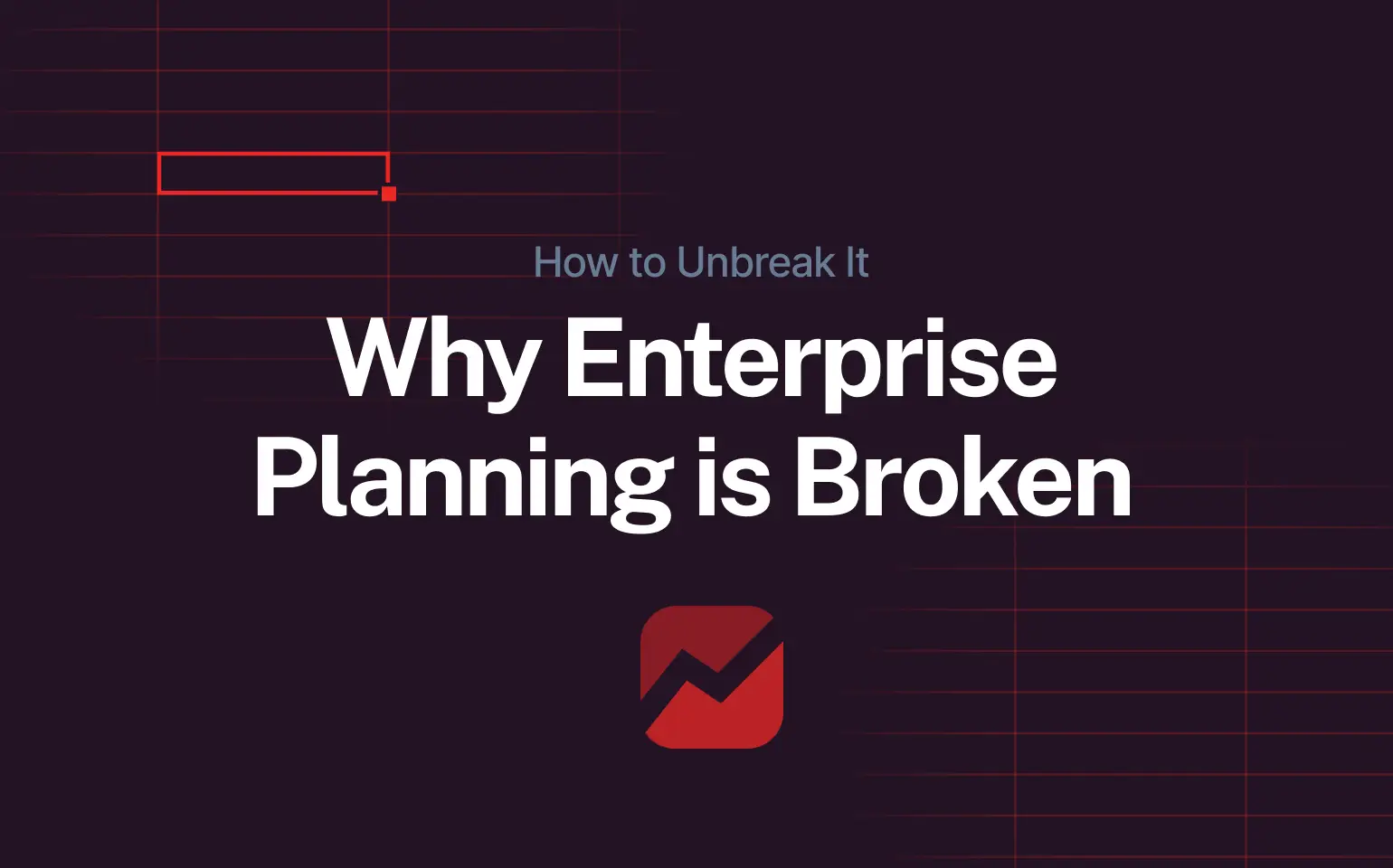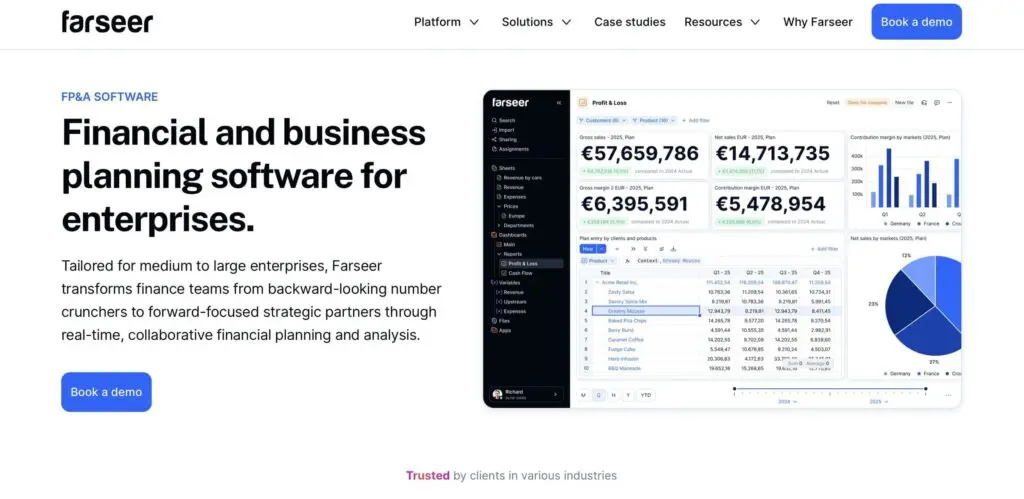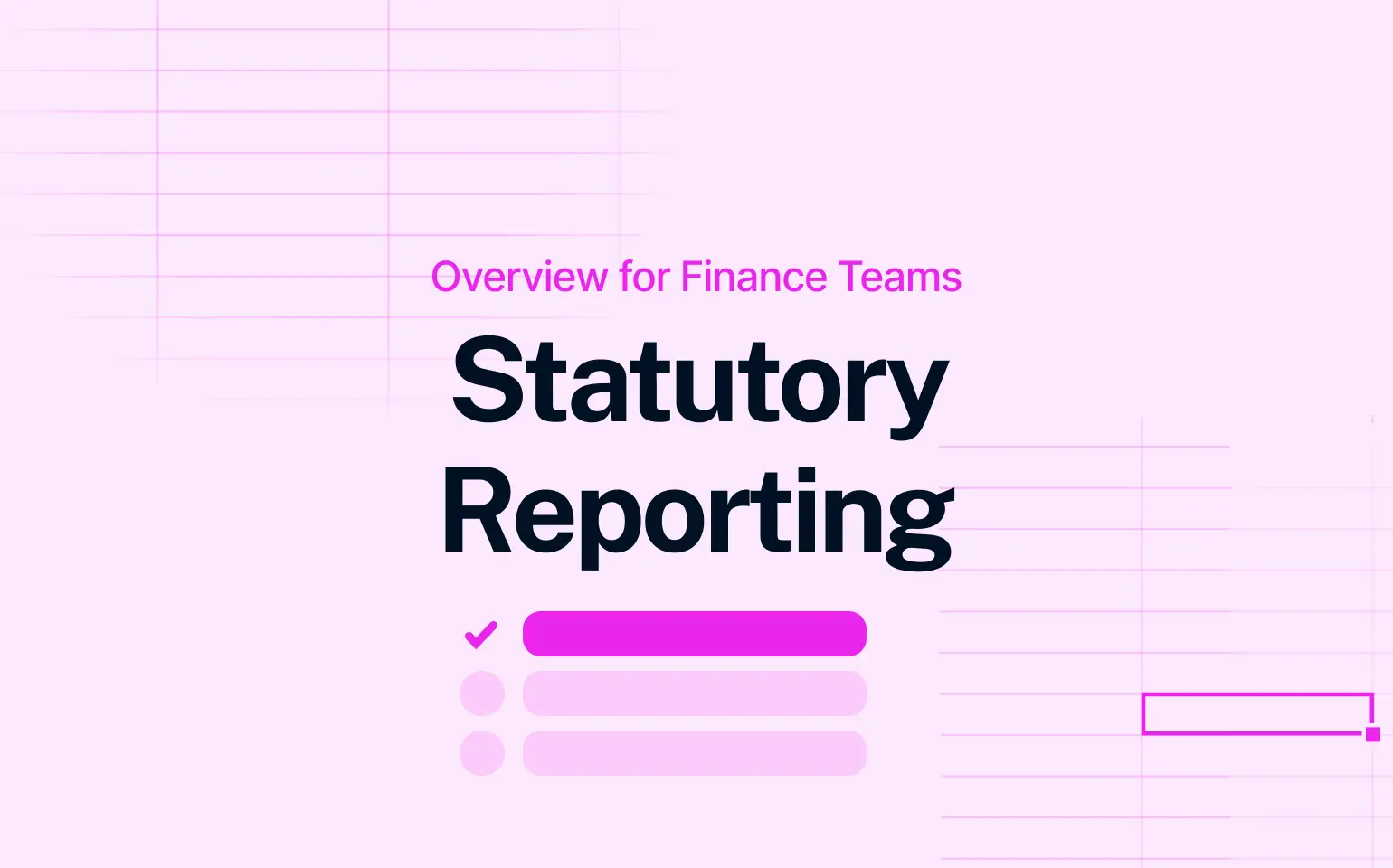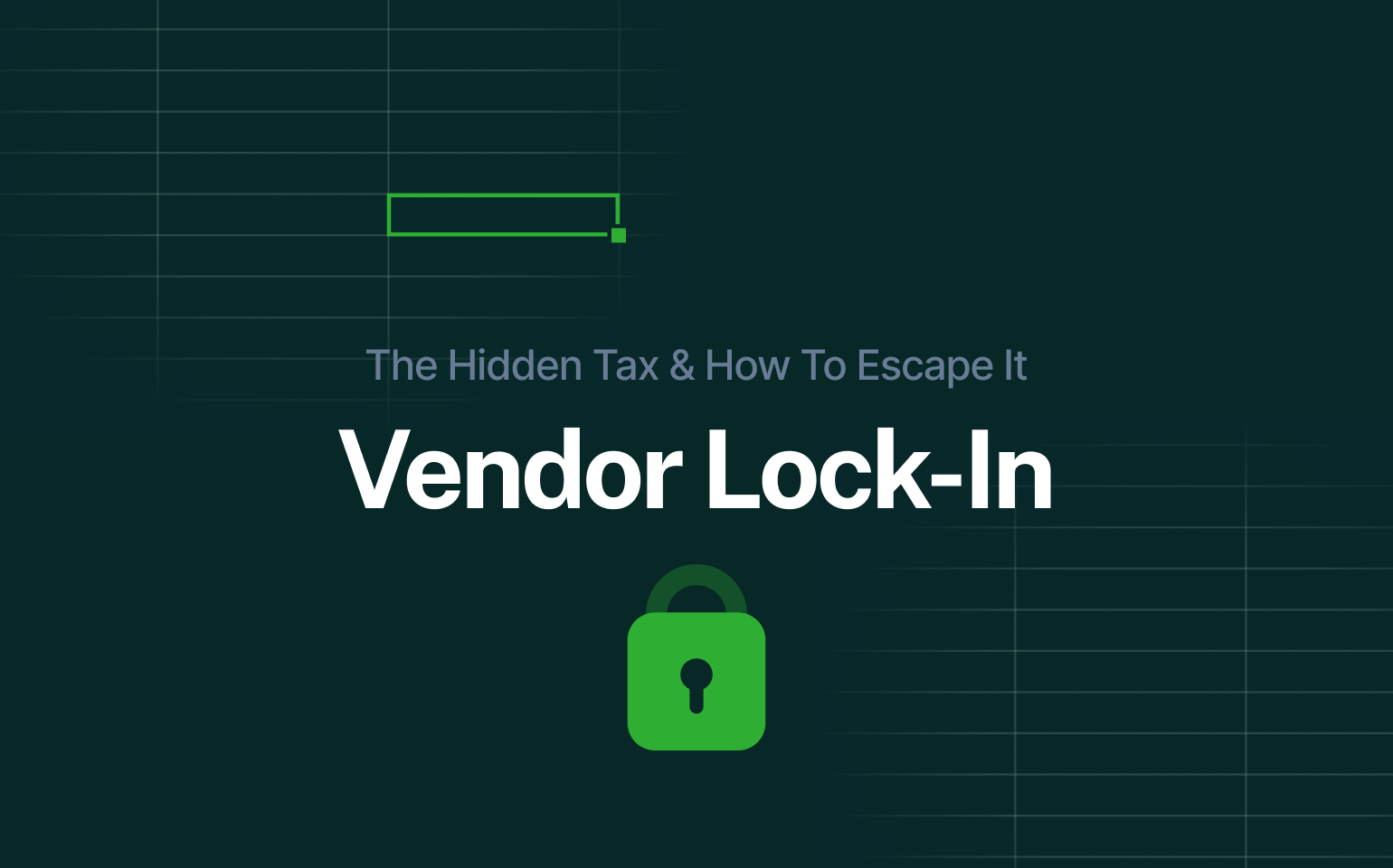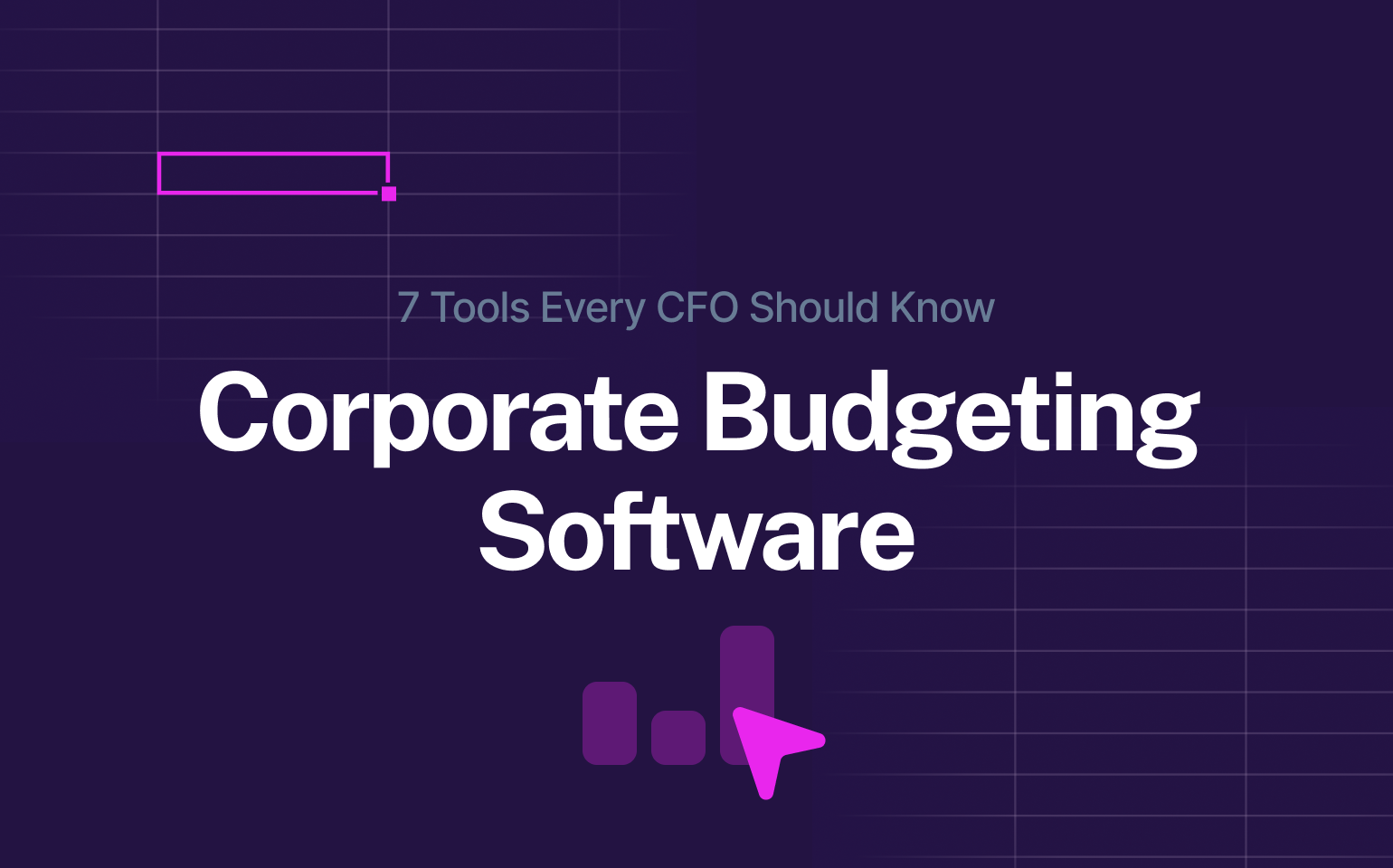Planning. The word alone is enough to trigger mild panic in most finance teams. Not because planning is hard, but because most enterprise planning software is absolute garbage.
It’s 2025, and most enterprise planning still looks like it’s stuck in 1996. Spreadsheet chaos. Disconnected teams. Static forecasts based on old assumptions and older data. People spending more time formatting cells than thinking strategically.
We’ve seen it everywhere, from fast-moving scale-ups to multi-billion-dollar enterprises. Doesn’t matter the industry. The planning process is broken. And the real tragedy? Everyone knows it. They’ve just given up pretending it can be better.

Well, we haven’t.
At Farseer, we’re not here to slap lipstick on the pig. We’re here to unbreak planning, completely.
Let’s start with the autopsy.
The Current State of Enterprise Planning: Slow, Dumb, and Disconnected
Here’s what “planning” usually means inside most enterprises:
- A bloated Excel file with 37 tabs, 42 lookup tables, and a prayer.
- Manual data exports from six systems that don’t talk to each other.
- Version control chaos (“Q3_final_final_2_REAL.xlsx”).
- A static annual forecast based on assumptions that were outdated before the board even saw them.
- Meetings to align on what version of reality the team is working with this week.
It’s not just inefficient. It’s actively harmful.
You’re not planning. You’re reconstructing the past and calling it strategy.
Worse: you’re anchoring critical decisions – headcount, investments, budgets, supply chain allocations on fragile documents that can be broken by one bad copy-paste.
Planning Wasn’t Supposed to Be This Stupid
Planning should be the most strategic thing a company does. It’s where decisions are simulated, where trade-offs are explored, where the future is shaped before it happens.
But in reality?
It’s an admin nightmare. It’s finance teams herding spreadsheets across departments, chasing last month’s numbers, and spending more time validating data than analyzing it.
The result is a culture of reaction, not prediction. Teams don’t proactively adjust to what’s coming. They scramble to make sense of what just happened.
And we wonder why “finance as a strategic partner” is still just a LinkedIn buzzword.
The Myth of the “Modern Planning Tool”
By now, you’re probably thinking: “Yeah, but there are modern tools for this, right?”
Sure. There are tools. Hundreds of them. And they all promise the same things:
- Real-time collaboration
- Driver-based forecasting
- End-to-end visibility
- AI, machine learning, cloud-native, and some other buzzwords they copied from Gartner reports

And then what do you get? A clunky interface bolted on top of a database that can’t handle real-time updates, with consultants who need six weeks to set up a basic model, and data refreshes that lag behind your actual business.
In other words, you get old planning with a new logo. That’s not how modern enterprise planning software should work.
Planning Is Broken Because It’s Still Designed for Control, Not Agility
Traditional enterprise planning tools are built on one assumption: that planning is a centralized, controlled, top-down process.
But that world is dead.
Markets shift too fast. Business models evolve quarterly. Your product, pricing, team, and cost structure all change faster than your current system can even load. Gartner has repeatedly warned that rigid enterprise tools limit agility and responsiveness – especially when planning cycles need to adapt in real-time.
Planning today needs to be:
- Real-time: Not “monthly refreshes” real-time. We mean live.
- Collaborative: Everyone sees the same numbers and contributes to the same plan – together.
- Scenario-driven: You don’t make one plan. You run ten scenarios and choose the best one on the fly.
- Connected: Data, decisions, and people all live in one environment, not scattered across sheets and systems.
- AI-powered: Because relying on gut instinct and last year’s plan doesn’t cut it anymore.
This isn’t a wishlist. It’s the bare minimum for making smart decisions in today’s environment.
What Unbroken Planning Looks Like
We didn’t want to ‘modernize’ planning. We wanted to blow it up and start from zero. Most enterprise planning software just repackages old logic. We rebuilt the whole approach:
1. Real-time, multi-user collaboration
Everyone works on the same numbers, at the same time. No emailing files. No version control drama. Just one shared model, live and synced. The way collaboration should’ve always worked.
2. Models that anyone can build and adjust
You don’t need a “Farseer-certified architect” to make changes. You can model business logic the way you think, not the way the software demands. And you can do it right now, not next sprint.
3. AI as a co-pilot, not a gimmick
AI doesn’t just autofill numbers, it finds anomalies, flags risks, suggests scenarios, and helps you stress test plans in seconds. Finance teams stop being spreadsheet operators and start being actual analysts.
4. Integration without integration hell
We connect to the tools you already use. The data flows in and out cleanly. No middleware monstrosities. No 6-week integration projects. And your data stays fresh – because stale data is just a fancy way of saying “wrong.”
5. Plans that update themselves
Did your actuals change this morning? Cool. So did your plan.
No one needs to manually roll forward models or re-key numbers. The system keeps up with your business.
This is what planning should look like. And it’s exactly what Farseer does.
Planning as It Should Be: Fast, Strategic, Human
If your planning system can’t keep up with your business, it’s not a system. It’s a drag.
And if it needs five consultants and a 60-slide implementation roadmap to be usable, it’s not “robust”, it’s broken by design.

The future of planning isn’t more complexity. It’s more clarity. It’s not about controlling the plan. It’s about enabling the business to move.
Farseer is planning for people who actually need to get sheet done. No more waiting on reports. No more lost versions. No more stale numbers. Just you, your team, your data, and your decisions, moving in real time.
Stop Planning Like It’s 1996
You can’t navigate a high-speed market using last month’s forecast and last year’s logic. You can’t lead with planning that was designed for stability in a world addicted to volatility. And you can’t win when your plan is built in Excel and duct-taped across systems that barely talk to each other.
You want to be fast? Be accurate? Be strategic? Then you need a planning tool that doesn’t just “digitize” your old ways of working. You need one that breaks them and rebuilds something better.
We built Farseer for that.
Let’s Unbreak Your Planning
If you’re tired of planning that’s static, reactive, and painful, we get it. We were too. Let’s fix it.
Book a demo and let’s show you what unbroken planning actually looks like.
